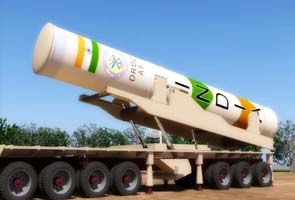Chanakya's_Chant
SENIOR MEMBER

- Joined
- Jul 22, 2013
- Messages
- 3,395
- Reaction score
- 28
- Country
- Location
India to Test Fire Canister Based Agni V ICBM in January - PM Modi likely to witness the Launch

First Test Flight of Agni 5 in 2012
Preparations are afoot at the defence base off Odisha coast for the first canister launch of India’s longest range nuclear capable missile Agni-V. The test is likely to be conducted on January 7 or 8 and Prime Minister Narendra Modi has been invited to witness the launch.
First Test Flight of Agni 5 in 2012
BALASORE: Preparations are afoot at the defence base off Odisha coast for the first canister launch of India’s longest range nuclear capable missile Agni-V. The test is likely to be conducted on January 7 or 8 and Prime Minister Narendra Modi has been invited to witness the launch.
The motor, body and other sub-systems of the indigenously developed missile having a strike range of 5,000-km have been brought to the Wheeler Island test facility and DRDO scientists are busy assembling the weapon system.

Range Comparision of Agni Missiles
Sources told this paper that the schedule of the missile test depends on the programme of the Prime Minister.
This will be third developmental trial of the surface-to-surface Inter-Continental Ballistic Missile (ICBM). Its first test was conducted on April 19, 2012 and second test on September 15, 2013. Both were successful and the data generated during both the missions were satisfactory.

The "A 5" Canister developed by DRDO
Successful trial of the weapon system would pave the way for its induction in the armed forces next year. The canister version, which imparts higher road mobility, will give the armed forces greater operational flexibility than the earlier generation of Agni missiles.
DRDO Chief Avinash Chander said though the exact time and date has not been finalised, the test is on schedule. “This missile is the best in its class in the world with its advanced ring-laser gyros, composite rocket motors and highly accurate micro-navigation systems and inertial navigation systems,” he said.
The three-stage, 17-metre tall, two-metre wide Agni-V, weighing around 50 tonnes, is capable of carrying a nuclear warhead of about 1.5 tonnes. As it incorporates advanced technologies involving ring laser gyroscope and accelerometer for navigation and guidance, its accuracy level is far higher than its three earlier variants.

Sucessful Test of TCT 5 (Dummy Launch)
What makes the missile more effective is that it can be equipped with Multiple Independently Targetable Re-entry Vehicles (MITRV) capable of delivering multiple warheads at different targets at long distance.
In its operational form, the missile is designed to be stored and launched from the canister, enhancing its storage, operational readiness, transportability, response time and shelf life.
Source:- Defence News - Canister Launch of Agni-V Next Month









